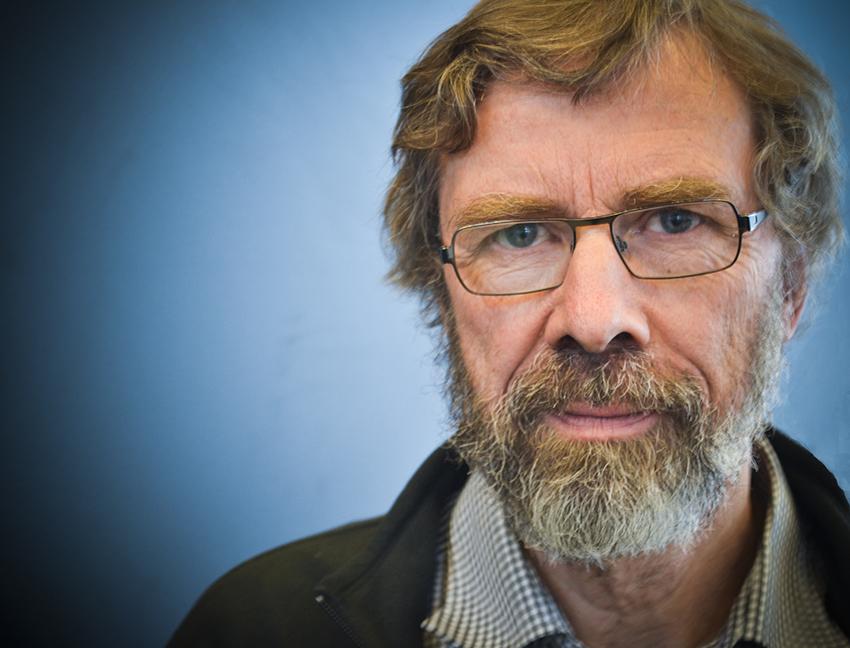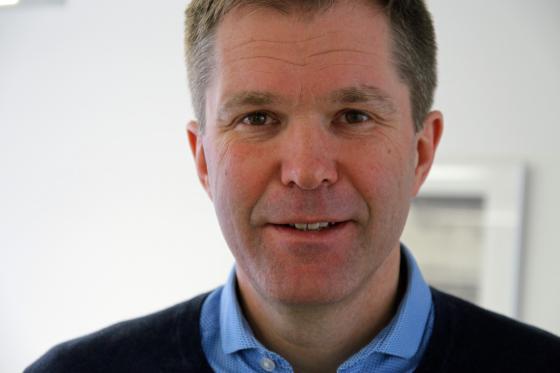Fewer female centre directors
In the previous funding round for the Centres of Excellence (SFF) scheme, 23 percent of the centre directors were women. In this year’s round, no women will be directing the SFF centres on their own.
“The lack of gender balance like we see here sends a very unfortunate message,” says Knut Liestøl.
Liestøl is a professor in the Department of Informatics at the University of Oslo. He also heads up the Research Council’s Programme on Gender Balance in Senior Positions and Research Management (BALANSE). The purpose of this programme is to improve the gender balance at the senior level in Norwegian research.
“The Research Council must now review all the information it has about the process leading up to the selection of the SFF centres. The goal is to understand why this imbalance has occurred,” says Liestøl.
“We are not satisfied”
This is the fourth time that the Research Council has granted a small number of research groups status as a Centre of Excellence (SFF). The award comes to a total of NOK 1.5 billion for a 10-year period.
Two of the ten new SFF centres are directed by a woman in conjunction with a man. The remainder have male directors, and one of the centres has two men at the helm. Director General John-Arne Røttingen admits that this is not in keeping with the Research Council’s own objective to improve the gender balance in the research sector.
“Our overall target is to have at least 40 percent women as project managers. This also applies to the SFF centres. So no, we are not satisfied that two of the thirteen centre directors in this funding round are women.”
The Research Council launched the Centres of Excellence scheme in 2003. The aim was to strengthen Norwegian research by developing cutting-edge research environments that could compete at a high international level.
In the first funding round, all the centres had male directors, and most of the researchers at both senior and junior levels were men as well. No women held the top position in the second round either when eight new SFF centres were funded in 2007.
Then a change occurred in the 2013 round. Thirteen new SFF centres were selected, and this time three women became centre directors. Not surprisingly, one of them is May-Britt Moser, who in the following year received the Nobel Prize in Medicine together with Edvard Moser. The other SFF centres with female directors are the Centre for Multilingualism in Society across the Lifespan at the University of Oslo and the Centre for Environmental Radioactivity at the Norwegian University of Life Sciences.
“Gender must be a criterion”
“What happened in this year’s funding round? Did you rest too much on your laurels from the previous round?”
“No, we certainly did not, although we were pleased with the progress we saw in the previous round,” says Røttingen.
“We sent out the same signals to the applicants in this round. The selections must be based on scientific excellence, and the centres are chosen based on the scientific merit of the proposal and their potential to conduct new, basic research at a high level. But in the end when the committee compiles its list and assesses which centres will be funded, gender is also supposed to be a criterion.”
“Did gender as a criterion have any consequences for the selections this time?”
“I don’t wish to comment on that. But as I said, it’s one of the criteria which, in keeping with the Research Council’s guidelines, must be given weight in the final assessment.”
However, Røttingen believes that the institutions that submit the grant proposals also must take some responsibility. A total of 150 research environments applied to become SFF centres in this fourth funding round of the scheme.
“In other words, the competition to become an SFF centre is keen. Of the 150 proposed centres, only 21 percent had planned to have a female director. This is too low. We should be up over 40 percent. As a result, I want to have a dialogue with the research institutions, at least the largest of them that usually submit multiple applications. They must take responsibility for setting priorities so that their application portfolio has better gender balance.”
“But what do you think about the fact that there were more proposals from centres with female directors compared with the number that were actually selected?”
“I want to emphasize that we’re talking here about a small number – only 10 centres – that were selected in the end. Just one more female director would have made a big difference percentage-wise.”
“What will be the carrot that encourages the institutions to work for better gender balance?”
“We cannot make gender balance a requirement as long as the selections are based on scientific excellence, and only that. But we can emphasize that the Research Council expects better gender balance from the applicant institutions, which also prioritize who they will put forward in the grant proposals.”
“What was the gender balance of the international referee panel?”
“It was balanced. Both genders were represented by at least 40 percent. Four of the nine members were women.”

Scientific mismatch
For many years Knut Liestøl has been a driving force to increase focus on gender balance in academia. He is the former head of the Research Board of the Division for Science at the Research Council, and he also directed the Research Board of the Division for Large-scale Programmes from 2007 to 2011. He is most concerned with trying to understand the system and working to change the leadership at the various institutions.
“As I mentioned, I want the Research Council to look at the actual process that occurred prior to the SFF selections. But it’s just as important to look at how the research systems put people into positions to become centre directors. The leadership must see how reliant you are on having someone help you get ahead in the system, someone who sees you, gives you confidence, who includes you in important projects and networks. It’s still far too common to recognize talent in men rather than in women.”
“What qualities do you think are required of a centre director?”
“First of all, you must be a good researcher with experience in research management as well. And when I look at the people who have become centre directors so far, it’s certainly not a disadvantage to be a little tough, although not all of them fall into this category.”
“What do you mean by ‘tough’?”
“That you are very self-confident and not modest about your own abilities.”
Subject areas and academic traditions also play a role in the decision about which research environments are granted status as SFF centres, according to Liestøl.
“There is a rather clear mismatch between where academia finds excellence in research and which subject areas most Norwegian researchers work in. There is no doubt a correlation between the subject areas with a large number of men and where it’s believed that excellence in research takes place.”
“What are you referring to? Natural science and medicine?”
“Yes and no. It’s more specific than that. You find some of the clearest examples of this in the humanities, where certain subjects such as philosophy, linguistics and ancient history have received a large share of the funding for centres of excellence in the Nordic region, and these are the subjects with many men.”
“Shared directorship may be an advantage”
The two women who will become centre directors in this round will be sharing their positions with men.
“What do you think about that?”
“I have two thoughts about that,” says Knut Liestøl.
“On the one hand, I think a shared directorship is a good thing for a Centre of Excellence, so in one way it’s very positive. But in precisely this context it also sends an unfortunate message that women must have a man at their side in order to direct an SFF centre.”
John-Arne Røttingen also believes that a shared SFF directorship may be positive. He says that for the two centres concerned, it appears to be a case of creating continuity in the leadership.
“One of the centres will start up with a man, and then the baton will be passed to a woman at the halfway point. At the other centre, they will start up with a women as director. In both cases, it’s the eldest researcher that will begin, regardless of gender.”
“Could an even greater emphasis on interdisciplinarity in the research projects have helped to increase the percentage of women?”
“No, I don’t think so necessarily. A larger percentage of interdisciplinary centres could have resulted in more shared directorships to ensure scientific breadth, also in the management. But a critical point regarding the SFF centres is that such guidelines are unwanted. The research must be assessed on the subject areas’ own criteria,” says Røttingen.
Translated by Connie Stultz.
University of Oslo (UiO):
Centre for Cancer Cell Reprogramming
Faculty of Medicine, Institute of Clinical Medicine
Centre director: Harald Stenmark
Developing an integrated open access organ on chip platform for drug discovery
Faculty of Medicine, Institute of Basic Medical Sciences
Centre director: Stefan Krauss
Hylleraas Centre for Quantum Molecular Sciences
Faculty of Mathematics and Natural Sciences, Department of Chemistry. The centre is divided between UiO and UiT, with UiO as the project owner.
Centre directors: Trygve Helgaker and Kenneth Ruud
Rosseland Centre for Solar Physics
Faculty of Mathematics and Natural Sciences, Institute of Theoretical Astrophysics
Centre director: Mats Carlsson
Centre for Interdisciplinary Studies in Rhythm, Time and Motion
Faculty of Humanities, Department of Musicology
Centre directors: Anne Danielsen and Alexander Jensenius
Norwegian University of Science and Technology (NTNU):
Center for Low Dissipation Quantum Spintronics
Centre director: Arne Brataas
Porous Media Laboratory
Centre director: Alex Hansen
University of Bergen (UiB):
Centre for Early Human Behaviour
Centre director: Christopher Henshilwood
Norwegian School of Economics:
Centre for Experimental Research on Fairness, Inequality, and Rationality
Centre director: Bertil Tungodden
Norwegian Institute of Public Health:
Centre for Fertility and Health
Centre directors: Per Magnus and Siri Håberg
Read more at the Research Council.
